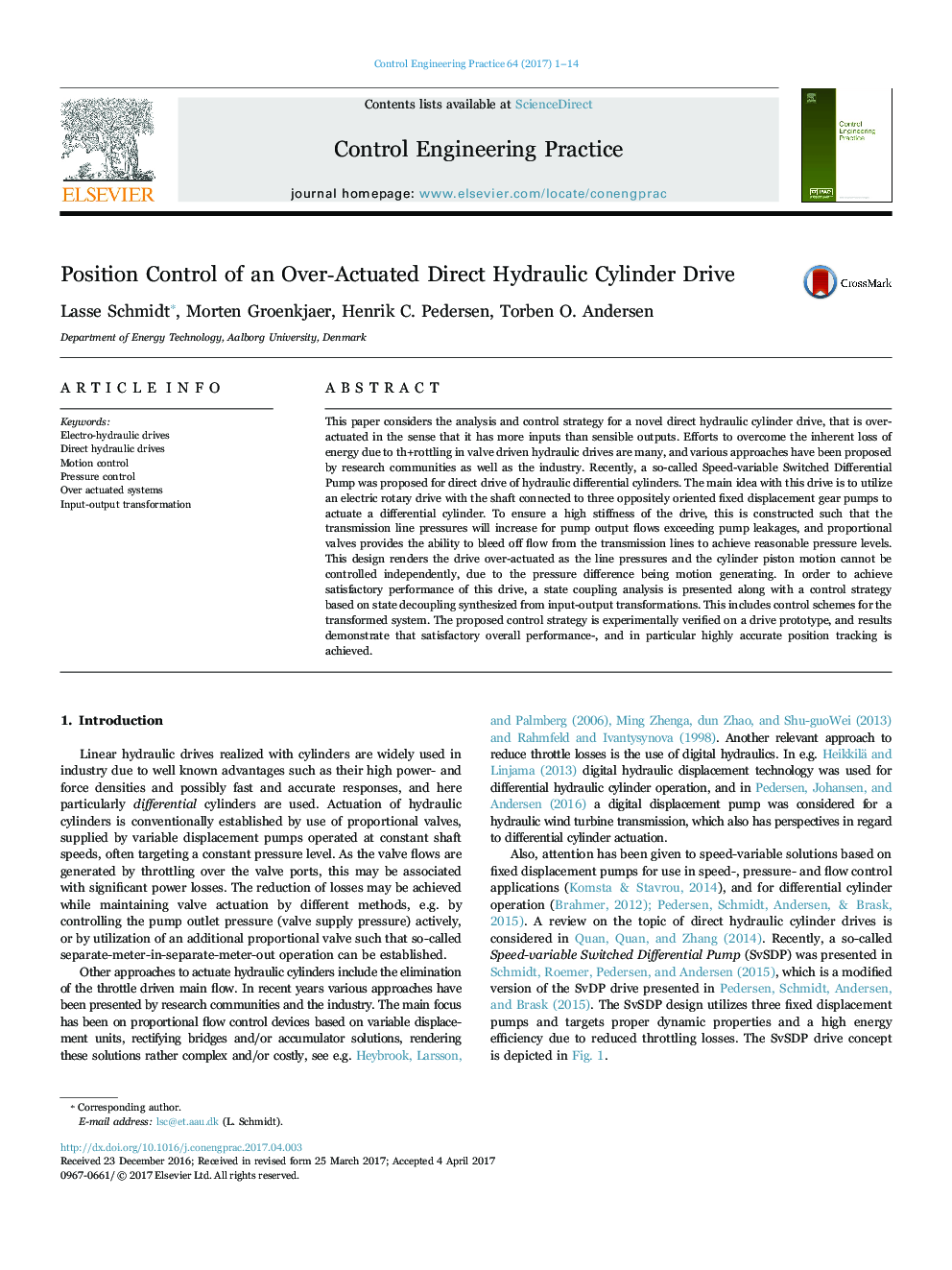| Article ID | Journal | Published Year | Pages | File Type |
|---|---|---|---|---|
| 5000312 | Control Engineering Practice | 2017 | 14 Pages |
Abstract
This paper considers the analysis and control strategy for a novel direct hydraulic cylinder drive, that is over-actuated in the sense that it has more inputs than sensible outputs. Efforts to overcome the inherent loss of energy due to th+rottling in valve driven hydraulic drives are many, and various approaches have been proposed by research communities as well as the industry. Recently, a so-called Speed-variable Switched Differential Pump was proposed for direct drive of hydraulic differential cylinders. The main idea with this drive is to utilize an electric rotary drive with the shaft connected to three oppositely oriented fixed displacement gear pumps to actuate a differential cylinder. To ensure a high stiffness of the drive, this is constructed such that the transmission line pressures will increase for pump output flows exceeding pump leakages, and proportional valves provides the ability to bleed off flow from the transmission lines to achieve reasonable pressure levels. This design renders the drive over-actuated as the line pressures and the cylinder piston motion cannot be controlled independently, due to the pressure difference being motion generating. In order to achieve satisfactory performance of this drive, a state coupling analysis is presented along with a control strategy based on state decoupling synthesized from input-output transformations. This includes control schemes for the transformed system. The proposed control strategy is experimentally verified on a drive prototype, and results demonstrate that satisfactory overall performance-, and in particular highly accurate position tracking is achieved.
Keywords
Related Topics
Physical Sciences and Engineering
Engineering
Aerospace Engineering
Authors
Lasse Schmidt, Morten Groenkjaer, Henrik C. Pedersen, Torben O. Andersen,
